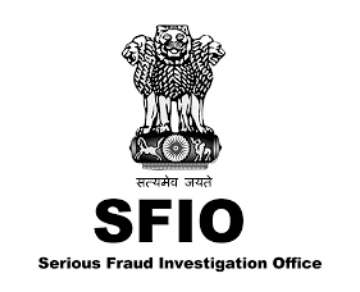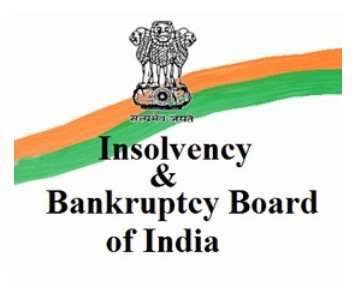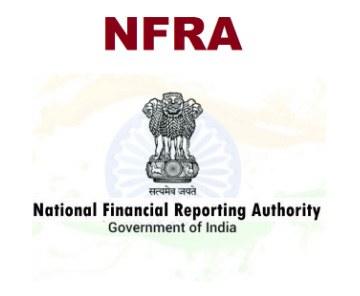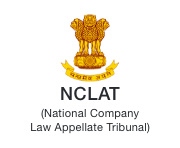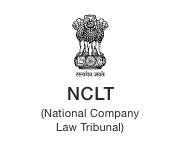
Classification and Registration of Companies
1. The Companies Act, 1956 broadly classifies the companies into private and public companies and provides for regulatory environment on the basis of such classification. However, with the growth of the economy and increase in the complexity of business operation, the forms of corporate organizations keep on changing. There is a need for the law to take into account the requirements of different kinds of companies that may exist and seek to provide common principles to which all kinds of companies may refer while devising their corporate governance structure. Rigid structures, unnecessary controls and regulations inhibit the risk taking initiatives of the entrepreneurs. Private companies and small companies, who do not generally go for public issues or deposits for their financial requirements but utilize their personal or in-house resources, need to be given flexibility and freedom of operation and compliance at a low cost. Equally, public companies that access capital from public need to be subjected to a more stringent regime of corporate governance. To enable a comprehensive framework for different forms of corporate organizations, the Company Law should ensure multiple classifications of companies. It should also enable smooth change-over of companies from one type to another.
Classification of Companies
2. The corporate form can take many shapes in order to respond efficiently to the environment. Company Law should therefore recognize a multiple classification of companies. The Committee indicates the criteria for classification on the basis of the forms discernible today, but recognizes that such classification can never be exhaustive.
i) On the basis of size: a) Small companies b) Other companies
ii) On the basis of number of members: a) One person company b) Private companies c) Public companies
iii) On the basis of control: a) Holding companies b) Subsidiary companies c) Associate companies
iv) On the basis of liability: a) Limited (I) by Shares (II) by Guarantee (with or without share capital) b) Unlimited
v) On the basis of manner of access to capital: a) Listed companies b) Un-listed companies
3. The law should recognize the potential for diversity in the forms of companies and rather than seeking to regulate specific aspects of each form, seek to provide for principles that enable economic inter-action for wealth creation on the basis of clear and widely accepted principles.
Small companies
4.1 The Committee sees no reason why small companies should suffer the consequences of regulation that may be designed to ensure balancing of interests of stakeholders of large, widely held corporates. Company law should enable simplified decision making procedures by relieving such companies from select statutory internal administrative procedures. Such companies should also be subjected to reduced financial reporting and audit requirements and simplified capital maintenance regimes. Essentially the regime for small companies should enable them to achieve transparency at a low cost through simplified requirements. Such a framework may be applied to small companies through exemptions, consolidated in the form of a Schedule to the Act.
4.2 Law could also consider an integrated approach whereby a deregulated framework for private companies may be provided, which may also apply to small companies. However a definition of small companies may be considered for enabling such a regime. There are bound to be problems associated in prescribing size. In our view, size may be assessed on the basis of gross assets comprising of fixed assets, current assets and investments not exceeding a particular limit as also turnover. Since the definition of “small” may change over time, this may be done through rules.
4.3 To qualify for exemptions, a small company should however neither be a holding nor a subsidiary of any other company. However, the Committee does not feel the need for providing a special internal governance and constitutional regime to small companies. This is likely to come in the way of their future growth. Instead the Committee recommends enabling of new vehicles for business, such as Limited Liability Partnerships, through separate legislation, if necessary.
4.4 Associations, Charitable Companies etc. licensed u/s 25 of the existing Companies Act, should not be treated as small companies irrespective of their gross assets.
4.5 The law should provide a framework compatible to growth of small corporate entities. Exemptions should however facilitate compliance by small companies in an easy and cost effective manner. These should not incentivize concealment of true size by any entity or be a barrier to growth of small companies.
Private Companies
5. Private companies represent a different set of relationships in terms of ownership, risk and reward as compared to public companies. Since private companies, do not access capital markets, they require less rigorous protection for their shareholders. They however represent an important organizational form for conduct of business. Therefore there is a case for lighter regulatory overhang over private companies. The existing law provides for certain relaxations to private companies on account of their nature. We are of the view that this approach should be continued and amplified where appropriate. While good Corporate Governance is equally important for success of such private companies, the obligation for dissemination of information of corporate process should be so structured that such enterprises do not lose the flexibilities in conduct of their business. In particular, the law should enable a private company to take any decision it is otherwise empowered to take, without observing the formalities of the Act if the members of the company unanimously agree. A simplified circular resolution procedure should also be considered where unanimity is not possible. Since disputes may also arise amongst the members of such companies, the costs of which may ruin the company, the regime for private companies should contain dispute resolution procedures, simplified to the extent possible.
One Person Company (OPC)
6. With increasing use of information technology and computers, emergence of the service sector, it is time that the entrepreneurial capabilities of the people are given an outlet for participation in economic activity. Such economic activity may take place through the creation of an economic person in the form of a company. Yet it would not be reasonable to expect that every entrepreneur who is capable of developing his ideas and participating in the market place should do it through an association of persons. We feel that it is possible for individuals to operate in the economic domain and contribute effectively. To facilitate this, the Committee recommends that the law should recognize the formation of a single person economic entity in the form of ‘One Person Company’. Such an entity may be provided with a simpler regime through exemptions so that the single entrepreneur is not compelled to fritter away his time, energy and resources on procedural matters. 6.1 The concept of ‘One Person Company’ may be introduced in the Act with following characteristics :- a) OPC may be registered as a private Company with one member and may also have at least one director; b) Adequate safeguards in case of death/disability of the sole person should be provided through appointment of another individual as Nominee Director. On the demise of the original director, the nominee director will manage the affairs of the company till the date of transmission of shares to legal heirs of the demised member. c) Letters ‘OPC’ to be suffixed with the name of One Person Companies to distinguish it from other companies;
Government Companies
7.1 In general, there is little justification for Government companies being provided relaxations in compliance with company law. It is even less if such companies are listed. Not only should such Government companies be able to compete in the market economy with other companies on equal terms, it would not be fair to the investors or creditors if such entities are allowed to present their performance on the basis of dissimilar parameters.
7.2 Government companies may be subject to imposition of non-commercial/ commercially unviable social responsibilities. However the costs of such responsibilities should be transparently assessed and provided by the Government through the budget as a subsidy. It is not appropriate that application of the law or standards be relaxed to allow such costs to be incurred in a non-transparent manner.
7.3 There may be situations where such companies may require special treatment in activities related to the security of State. There may be an enabling provision to relax operation of Companies Act for such companies. Other companies, engaging in commercial activity should compete on the basis of transparency and level playing fields. Preferential treatment to such companies would be to the detriment to the capacity of Indian companies to survive in a competitive market.
7.4 A Government company should be clearly defined in law. It should be one where there is a clear majority stake held by the state- i.e. Central and/or State Government(s). There is no rationale for the definition of Government company being extended to companies set up by Government companies in course of their commercial activities.
Holding and Subsidiary Companies
8.1 The Companies Act should not pre-empt the decision as to what structure is appropriate for controlling businesses. Such prescriptions will make the environment rigid and put Indian companies at a disadvantage vis-à-vis their competitors internationally. Such restrictions would also not facilitate sound corporate planning, formation of joint ventures, international operations or restructuring of companies.
8.2 Therefore, we are of the view that there may not be any restriction to a company having any number of subsidiaries, or to such subsidiaries having further subsidiaries. However, the Act should provide for a clear definition of both the holding as well as subsidiary body corporate. In doing so, formation of subsidiary structures through control by a holding company, directly, indirectly or through one or more subsidiaries should be taken into account, keeping in view international practices.
8.3 The need to provide for transparency and to control misuse of funds through transfers from one company to another, including subsidiaries, has to be recognized. However, it needs to be recognized that the phenomenon of siphoning off funds may not be caused solely on account of holding-subsidiary structure. Companies may use other routes/structures/associate companies to siphon off funds. Isolated instances of misuse of the holding-subsidiary structure should not result in doing away with this very important business model for investment and corporate planning. Instead of prohibiting formation of subsidiaries, there should be adequate disclosure obligations as to utilization of the funds raised or loans and advances given by the company to other entities. Strict disclosure and compliance norms in respect of holding and subsidiary company structures should be provided for.
8.4 The Committee is of the view that proper disclosures accompanied by mandatory consolidation of financial statements should address the concern attendant to the lack of transparency in holding-subsidiary structure.
8.5 There may be further provisions that the transactions between holding and subsidiary company may be treated as related party transactions and placed before the Board through the Audit Committee, where such a Committee exists. Transactions not in the ordinary course of business and/or not on arms length basis between the holding and subsidiary company, should be disclosed in the annual report along with management justification thereof.
8.6 In its examination of this issue, the Committee also considered the recommendations made by the JPC on Stock Market Scam on restricting the layers of subsidiary investment companies. The Committee noted that these recommendations were in context of the stock market / banking scams witnessed in India over the past decade. At the same time, it was argued that the creation of subsidiaries for separate manufacturing entities, joint ventures was a reality and there were no restrictions on foreign companies operating internationally. Even banks may have to set up subsidiaries for their Non Banking / Joint Venture companies engaged in insurance, asset management etc. In the present situation, when Indian companies were seeking to make investments abroad, such restriction would adversely affect their opportunities in face of international competition. During deliberations, it was felt that protecting legitimate business activity under a regime for setting up subsidiary companies would result in special carve outs and monitoring the activities of such companies would become an administrative nightmare. For these reasons, the Committee took the view that limiting the layers of subsidiary investment companies was not feasible. Instead, a regime for preventing misuse of this mechanism should be devised based on transparent Board processes and disclosures under close supervision of the regulator for listed companies.
Producer Companies
9.1 The administration and management of ‘Producer Companies’ is not in tune with general framework for companies with liabilities limited by shares/guarantees. The shareholding of a ‘Producer Company’ imposed restrictions on its transferability, thereby preventing the shareholders from exercising their exit options through a market determined structure. It was also not feasible to make this structure amenable to a competitive market for corporate control.
9.2 If it is felt that producer companies are unable to function within the framework and liability structure of limited liability companies. The Corporate Governance regime applicable to companies could not be properly imposed on this form. Government may consider introduction of a separate Act to deal with the regulation of such ‘Producer Companies’. Part IX A in the present Companies Act, which has hardly been resorted to and is more likely to create disputes of interpretation and may, therefore, be excluded from the Companies Act.
Joint Venture/shareholders Agreements
10.1 Capital and Technology in the modern world move into companies through joint venture opportunities. The ability to access technology, know-how, business, trade-marks and other intellectual property or service rights is critically linked with the law on joint ventures.
10.2 Over the years, several court judgments have been pronounced in India on the issue of validity of joint venture covenants. As per the judicial view, recognition to such covenants through corporate action is possible only if they are made part of the Articles of Association of a company. However, in this form, they are subjected to the overriding effect of Section 9 of the Companies Act, 1956. Thus, while joint venture agreements may take place and provide for certain exclusionary or extra-ordinary clauses pertaining to interventions by the joint venture partners, such exclusions are not generally compatible with the present Companies Act. They are, however, recognized under Contract Law. The effect of this framework is that dispute resolution in respect of joint venture provisions becomes subject to contract law provisions and is subject to lengthy arbitration. The companies however, prefer that such aspects should be addressed more speedily through the corporate processes.
10.3 There is an inherent inconsistency of the joint venture form with the provision of Section 111 A of the Companies Act, 1956 also which would need to be addressed if the facility of corporate based redressal mechanism is to be made available for joint ventures. It was noted that joint venture agreements have several clauses pertaining to voting rights, additional quorum requirements, arbitration provisions ousting statutory remedies, pre-emption rights or restrictions on transfer of shares.
10.4 It was represented before the Committee that there should be an appropriate exception to the doctrine of ultra vires under Section 9 of the Companies Act and the parties should have “party autonomy of contract” in their joint venture documentation. This would however imply that any third party dealing with any or either of named shareholders would have an obligation and a consequent right to seek disclosure and must verify the fullness of fact and terms contracted between the joint venture partners through shareholders agreements before dealing with the shares. Equally the Committee noted the concern that company law should not include provisions that provide “fly out” opportunities to companies seeking to evade its provisions. Nor could company law address the shortcomings of other legal regimes, the costs associated with arbitration and litigation that would need to be undergone to enforce contracts.
10.5 The Committee, after considering various aspects is of the view that in the current context, it would be appropriate to provide for a framework that would enable Indian entities to access greater opportunities through joint ventures while reform of the legal system to address difficulties faced in administration of civil law must continue. A transparent modality for providing recognition to agreements between joint venture partners for corporate action should be worked out in Company Law, keeping in view the concern that such arrangements should not become a window for circumventing the essential provisions of the Law.
10.6 The Committee is of the view that this conflict needs to be resolved since such restrictions under the Company Law will adversely affect the free-flow of capital and technology into the country in times to come. Therefore, a suitable provision should be incorporated under the new Company Law recognizing such arrangements between two or more substantial shareholders or joint venture partners.
Public Financial Institutions (PFIs)
11.1 Through the amendment in 1974, a new Section 4A {“Public Financial Institutions [PFIs]} was inserted in the Companies Act, 1956. This section defined certain institutions as PFIs and empowered Central Government (MCA) to notify, from time to time, other institutions PFIs. About 46 institutions have been declared as PFIs under this Section by the MCA. Though this term has been defined under the Companies Act, 1956, the term has been used and referred in many Acts and a number of benefits (economic as well as other) are available to such PFIs under Companies Act and other Acts/delegated legislations.
11.2 In view of changing competitive economic environment and continuous reforms in financial sector, a need has been felt for review of the concept of PFI. It is being felt in certain quarters that this concept should be deleted, with suitable transitory provisions in respect of existing PFIs. Suitable steps to take care of provisions in other Acts/delegated legislations, which are using this term should also be taken. Besides, there does not appear to be any logic for addressing such a concept (relating to Financial Institutions) in the Companies Act. The Companies Bill, 1997 had, therefore, proposed for shifting of this concept to PFI (Obligations as to Fidelity and Secrecy) Act, 1983, which is administered by Ministry of Finance.
11.3 They should be subject to similar regulatory provisions. There is no reason why a relaxed framework in respect of corporate governance should be provided to such institutions through exemptions in provisions of company law. Such institutions should be put through similar requirements of financial and management prudence as other FIs. Therefore, the Committee does not see any reason why the special regime for Public Financial Institutions provided under the Companies Act, 1956, should continue.
Incorporation
12.1 The process of incorporation through registration should be based on correct information to be disclosed by the promoters of the company with full liability towards its correctness. The information necessary for registration may be prescribed through rules. However, the contents of the Memorandum of Association should be part of the substantive law and not in the Rules. Process of registration should be speedy and compatible with e-Governance initiative taken up by the Government.
12.2 The companies should be required to make and authenticate detailed disclosures about promoters, directors of the company at the time of incorporation. These disclosures should be prescribed to be made in a manner that allows for additions/changes, keeping pace with the developments in the company.
12.3 The Promoters and Directors should disclose information that establishes/authenticates their proof of residence and identity through supporting documents such as Photographs, PAN Number, Passport, affidavits etc. that may be prescribed.
12.4 Every company should be obliged to have a registered office and to disclose it correctly along with proof of address, in a manner that enables access physically and by service of post. The companies should also be made to register their websites and e-mail addresses.
12.5 The primary responsibility for veracity of statements made should be that of promoters/ first directors. If agents or professional are empowered, this should be on the basis of suitable power of attorney and should not relieve the principals of their liability. Stringent penalties should also be provided for any professionals, if engaged, who do not exercise due diligence at the time of incorporation.
12.6 Directorships by the promoters/directors in other companies should be declared at the time of incorporation. The terms ‘Promoters’ and ‘control’ should be clearly defined for avoiding any doubts.
12.7 Stringent consequences should follow if it is found that incorporation has been done under false or misleading information.
Shifting of Registered Office
13. The present procedure requires the Registered office of a company being shifted from one state to another subject to order of CLB. The Committee expressed its concern at the delays and costs involved in the process. Besides, corporates should be afforded the opportunity of beneficial business environments if available in different parts of the country. A view was expressed that this decision should be left to the shareholders. However, the Committee also recognized that interests of other stakeholders would be involved. The Committee felt there was an urgent need for making this process simpler, faster and easier, without reference to a Tribunal/Court, ensuring that the new registered office is accessible to stakeholders for legal recourse, where necessary.
Vanishing companies
14.1 The Committee is seriously concerned at the phenomenon of companies that vanished after raising funds from the public, thereby cheating investors. This has resulted in a lack of credibility not only on the part of the companies but also of the institutional structure regulating such entities and enforcement agencies. We understand that the Central Government is now pursuing action against such companies through a coordinated mechanism involving both the Ministry of Company Affairs and SEBI. However, a lot requires to be done to prevent such phenomenon. We feel that such preventive action should begin with registration itself and should be sustained through a regime that requires regular and mandatory filing of statutory documents. With introduction of electronic filing, this process would become convenient to companies as well as the stakeholders. Behaviour resulting in non-filing of documents or incorrect disclosures should be dealt with strictly.
14.2 Information provided at the time of registration should determine the addresses of the company as well as its directors. It should be the duty of the Company to intimate any change of address within a fixed time period.
14.3 There should also be a system of random scrutiny of filings of corporates to be carried out by the registration authorities with heavy penalties for the companies found inadequate in their disclosures and filings.
14.4 Inter agency coordination should be enabled to track down the persons behind such companies to bring them to book. Law should be amended to make them disgorge their ill-gotten gains by lifting the corporate veil.
Incorporation- Allied Issues
e-Governance
15.1 The Committee takes note of the e-governance initiative launched by MCA and recommends that it be implemented speedily. It recognized the immense potential of this programme to bring about ease of compliance at a lower cost. However, the Committee observes that e-Governance should be cost-effective to companies, including Small and One Person Companies, easy to use and accessible to all stakeholders and general public and enable the process of registration and filing for disclosures and retrieval of data efficiently and at a low cost. Further, the system should have adequate capacities to handle the likely growth in the corporate sector in India in the years to come as well as the increase in disclosure requirements that may be mandated by the legal and regulatory framework.
15.2 All statutory filings should be made compatible to e-Filing by devising suitable e-forms. Such filings should be kept securely and should be identifiable through digital signatures.
15.3 The e-Governance system should enable quick disposal of the registration and incorporation processes with the use of self operating e-systems, minimizing physical interface and use of discretionary statutory powers by registering authorities. 15.4 All companies should be required to specify authorized signatories with authority to sign and authenticate filings digitally.
15.5 On-line filing and levy of charges etc. should be made easy. Once the system has established its effectiveness, it may be made mandatory for all the companies.
15.6 An effort should be made to resolve stamp duty issues between the Central and State Governments so that in times to come, law may recognize the concept of single national registry.
15.7 The Companies Act should provide a suitable legislative frame work for levy of user charges. Such charges should be reasonable to enable the operation of the e-governance initiative in a sustainable manner.
Name allotment
16.1 Other incorporation processes such as name allotment etc. should be made simpler and amenable to be completed through automatic e-systems. The Committee is of the view that the process of incorporation and registration should be competitive with developed economies of the world.
16.2 There may be reasonable prohibitions imposed under the Act on the use of certain names. The Government should retain powers to prevent companies having names that give the impression that the company is in any way connected with the Central / State Government or with a local authority.
16.3 There should be power in law to require a company to abandon misleading names or to trade under a misleading name.
16.4 The regime for change of name should be carefully reviewed. While providing the freedom to a company to change its name it should prevent too frequent a change of name to prevent cheating / misleading of stakeholders/ investors.
Restrictions on commencement of business :
17.1 Companies Act, 1956 provides for restrictions on commencement of business by public companies or exercise of any borrowing powers, unless the requirements of capital subscription by the numbers of the company have been met. Additionally, there is a requirement for issue of Commencement of Business Certificate by the Registrar of Companies (ROC).
17.2 It appears that issue of a certificate of commencement of business would not be necessary since present Companies Act prescribes the amount of capital to be paid up immediately after the registration. This should be adequate to establish the borrowing power of the company. In view of this, the requirement of obtaining a separate Certificate of Commencement of business imposes avoidable delay and could be dispensed with.
Limited liability Partnership (LLP)
18.1 In view of the potential for growth of the service sector, requirement of providing flexibility to small enterprises to participate in joint ventures and agreements that enable them to access technology and bring together business synergies and to face the increasing global competition enabled through WTO, etc., the formation of Limited Liability Partnerships (LLPs) should be encouraged.
18.2 It would be a suitable vehicle for partnership among professionals who are already regulated such as Company Secretaries, Chartered Accountants, Cost Accountants, Lawyers, Architects, Engineers, Doctors etc. However, it may also be considered for small enterprises not seeking access to capital markets through listing on the stock exchange.
18.3 We recommend that a separate Act be brought about to facilitate limited liability partnerships. The concept need not be addressed in Companies Act.
Limitation on Number of Partners specified in the Companies Act.
19.1 The Committee recognizes that there are many forms of association that would facilitate business operation. It also recognizes the relevance of proprietorship and partnership firms in this regard. While the corporate form of organization would provide greater clarity to the stake holders and entities interacting with the business firm, the Companies Act need not compel limitations on other forms of organizations. This should be left to be specified or regulated through the respective legislations relating to such forms. Therefore, there may be a need for review of the Partnership Act. The Companies Act however need not make any prescriptions in this regard.
19.2 Therefore, provisions limiting the number of partners as provided in the Section 11 of the Companies Act should be deleted. Necessary provisions in this regard may be included in the Partnership Act or other related Acts.
Simplification of the regime for exit of companies from the Register of Companies
Special Regime for Charitable and other Companies (Sec.25)
20.1 There is a need for transparency in functioning of such companies. Objects of such companies should be clearly defined.
20.2 Framework for remuneration should be such that it does not result in siphoning of the company’s funds.
Simplification of the regime for exit of companies from the Register of Companies
21.1 The Committee noted that the Register of Companies includes a very large number of defunct companies. There is a cost associated with carrying the information of such companies on the public register. This cost can be avoided.
21.2 The procedure for a company seeking exit from the Register of Companies needs to be simplified. This should not require operation of special schemes for providing exit to companies through relaxation of rules. This should be possible through normal operation of the law. The law should enable Registrars of Companies to use suo moto powers to strike off names of defunct companies (a company which is not carrying on business or any operation) effectively. They should also be empowered to strike off the names of companies from the Register of Companies on application for the purpose by the company directors or majority of them. The application form to be prescribed should be simple. On receipt of such application, Registrar should issue a public notice about his intention to exercise the power to strike off the name of the company and also invite public comments on why he should not do so, to be indicated in a time-bound manner, after which consent may be presumed.
21.3 Such application may however not be made if at any time during the previous 6 months, the company has changed its name, traded or otherwise carried on any business. The orders by the Registrar striking off the name of the company from the Register should again be issued in the form of a public notice and should take automatic effect on expiry of prescribed period. Public notice may be given by way of placing on the notice board / web site of the registration authorities and sent to the company as well as to its last known directors by registered post.

